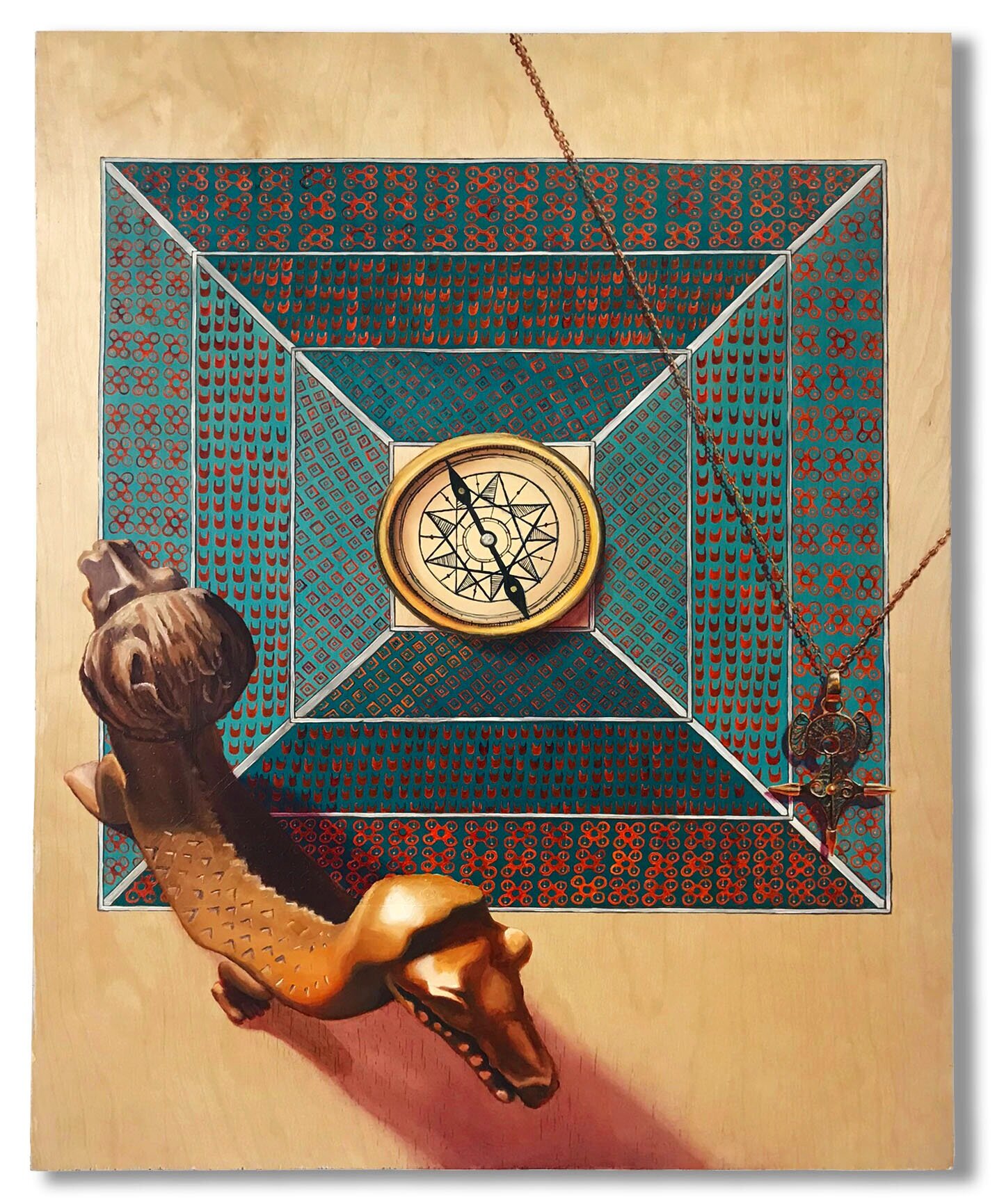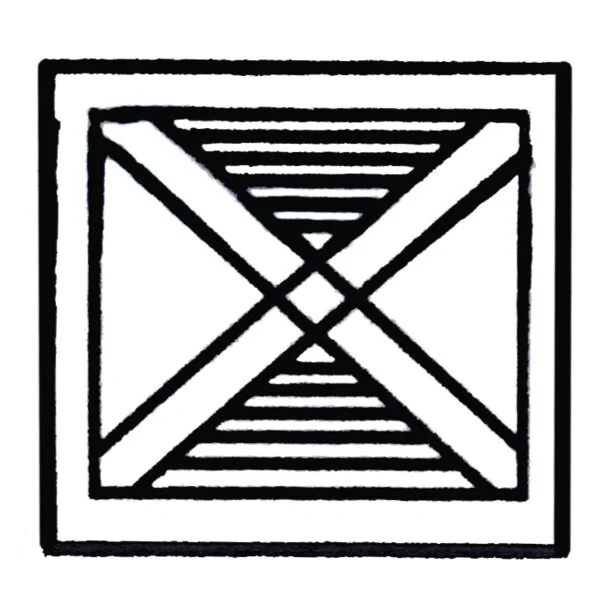









Father
24” x 20”
Oil on wood panel.
Back Story
This is part of a series of portraits I created in college. They described their subjects through symbolism rather than their likeness. I was captivated by the idea that every part of a renaissance portrait had meaning, from the jewelry, the posture to the presence or color of a dog. I wanted to create works where everything included had a specific and intentional meaning, but I did not culturally identify with the symbolism of the Renaissance.
My parents, who were raised in Senegal, Africa, decorated their home with artwork from the region they grew up in. The backdrop of this piece is made up of Adinkra symbols, which originate from West Africa. At the time of the creation of this piece, I misidentified Adinkra symbols as the markings I saw in the art on our walls and on our jewelry. Many years later, I learned that it’s much more likely that the symbols I saw were of the nomadic Tuareg people.
I struggle with this. I have developed an emotional connection with Adinkra symbols and their ability to beautifully communicate ideas, but I am also very aware of the appropriation taking place.
That being said, the painting was made and I chose the symbols in this painting thoughtfully, to share traits that I value in my father:
The objects have specific meanings as well:
The compass with a nine-pointed star represents my father’s strong moral compass that is guided by the Baha’i Faith.
The Liongator / wooden sculpture signifies his humor along with his connection and loyalty to family. This representation of this character is a reproduction of a sculpture my aunt commissioned for each of the families on that side of the family. It’s a reminder of a story that holds a special place in the hearts of our family.
The pendant is the first gift my father gave to my mother and it is one of the only necklaces I remember her wearing growing up. To me, it represents their love and partnership.
This pendant, which is called Croix D’Agadez, is a common Tuareg design. Learning the origins of this design jump-started my understanding of my appropriation.



